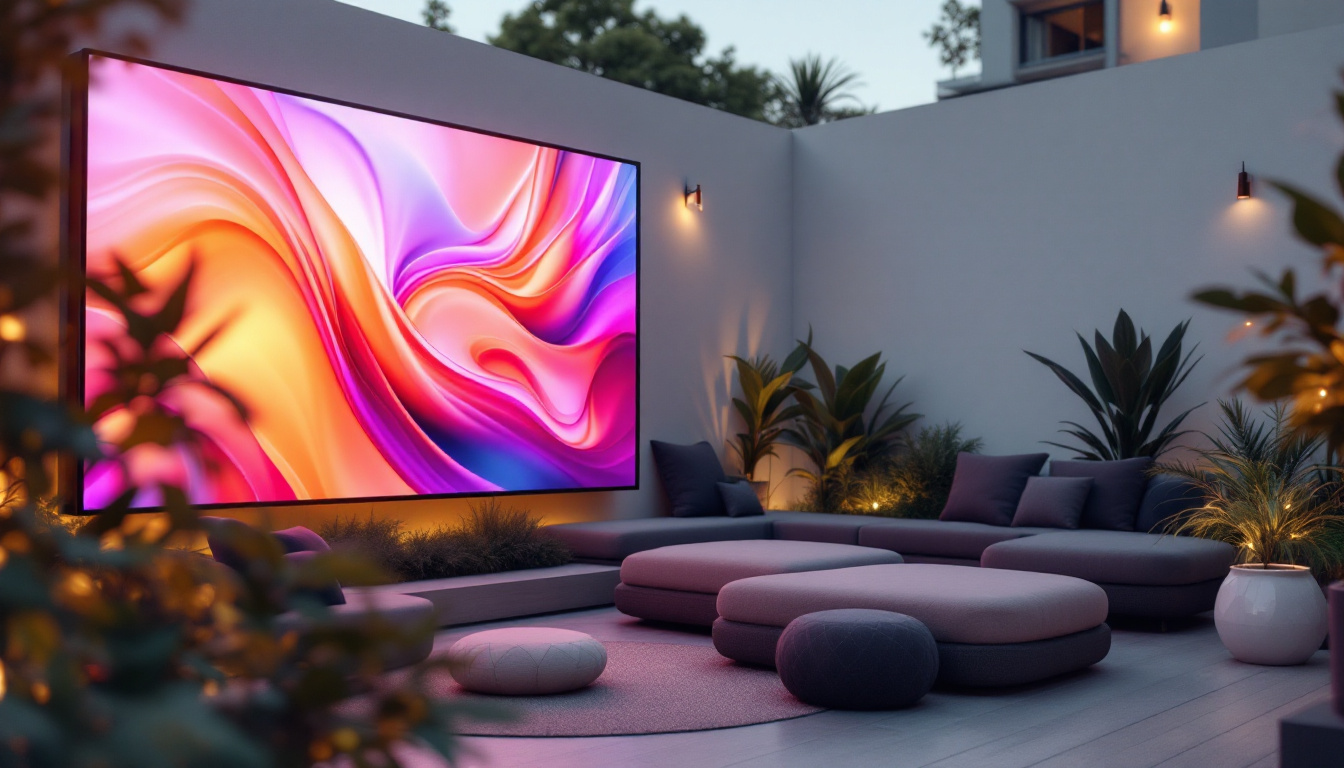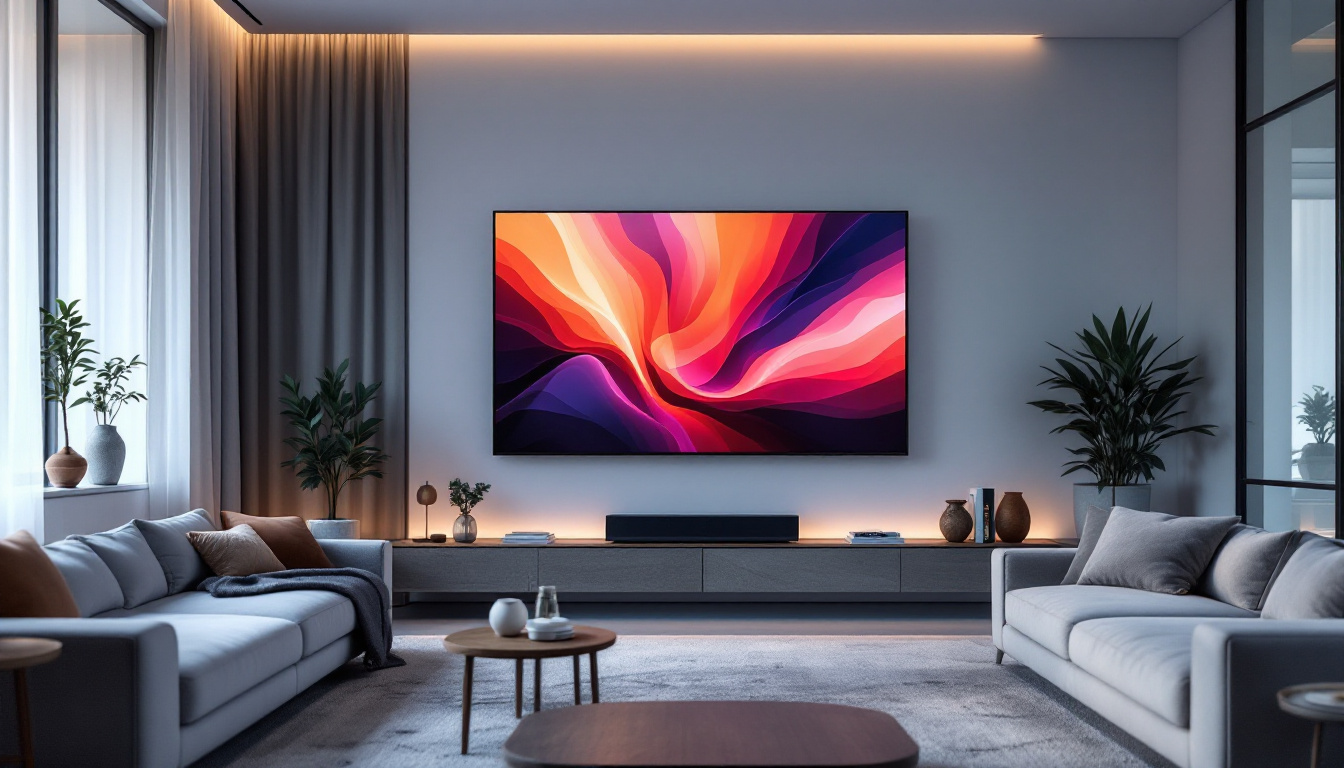In the realm of modern technology, the terms LCD and LED are frequently used interchangeably, leading to confusion among consumers. Understanding the distinctions between these two types of displays is crucial for making informed purchasing decisions. This article delves into the intricacies of LCD and LED displays, exploring their functionalities, advantages, and applications in monitors.
Understanding LCD Technology
Liquid Crystal Display (LCD) technology has revolutionized the way visual information is presented. It utilizes liquid crystals sandwiched between two layers of glass or plastic. When an electric current is applied, these crystals align to modulate light, creating images on the screen.
How LCD Works
The functioning of an LCD monitor is based on the manipulation of light. A backlight, typically fluorescent, illuminates the liquid crystals. The crystals themselves do not emit light; instead, they control the amount of light that passes through them. This process allows for the creation of images with varying colors and brightness levels.
Each pixel in an LCD monitor is made up of sub-pixels, usually in red, green, and blue (RGB). By adjusting the intensity of these sub-pixels, a wide spectrum of colors can be produced. This is why LCD monitors are capable of displaying detailed and vibrant images, making them popular for various applications. The precision with which these sub-pixels can be controlled is crucial for achieving high-definition visuals, which is why advancements in LCD technology have focused on improving pixel density and color accuracy over the years.
Types of LCD Displays
There are several types of LCD technologies, each with its own unique characteristics. The most common types include Twisted Nematic (TN), In-Plane Switching (IPS), and Vertical Alignment (VA). Each type has its advantages and disadvantages, which can influence the choice of monitor based on specific needs.
TN panels are known for their fast response times, making them ideal for gaming. However, they often suffer from poorer color reproduction and viewing angles compared to IPS panels. IPS technology, on the other hand, offers superior color accuracy and wider viewing angles, making it suitable for graphic design and professional work. VA panels are known for their deep blacks and high contrast ratios, making them excellent for multimedia consumption. Additionally, advancements in LCD technology have led to the development of newer variants, such as Advanced Fringe Field Switching (AFFS) and Super In-Plane Switching (S-IPS), which aim to combine the benefits of the existing types while minimizing their drawbacks. These innovations have further expanded the possibilities for LCD applications, from smartphones and tablets to large-scale displays in public venues.
LED Technology in Monitors
LED, or Light Emitting Diode, technology is often associated with LCD displays, as it refers to the type of backlighting used. While traditional LCD monitors utilized fluorescent backlights, LED monitors employ arrays of tiny diodes to provide illumination. This shift has led to significant improvements in display quality and energy efficiency.
How LED Backlighting Works
LED backlighting can be categorized into two main types: edge-lit and full-array. Edge-lit LED monitors have diodes placed along the edges of the screen, allowing for a thinner design. However, this configuration can result in uneven brightness across the display. Full-array LED backlighting, on the other hand, features a grid of diodes behind the entire screen, providing more uniform lighting and better contrast.
Additionally, some full-array LED displays come equipped with local dimming technology. This feature allows specific areas of the screen to dim or brighten independently, enhancing contrast and improving black levels. This capability is particularly beneficial for viewing high dynamic range (HDR) content, which requires precise control of brightness levels.
Advantages of LED Displays
One of the primary advantages of LED displays is their energy efficiency. Compared to traditional LCD monitors with fluorescent backlights, LED monitors consume less power, making them more environmentally friendly and cost-effective over time. Furthermore, LED technology allows for thinner and lighter designs, appealing to consumers seeking sleek aesthetics.
In terms of image quality, LED displays often outperform their fluorescent counterparts. They offer better brightness levels, improved color accuracy, and enhanced contrast ratios. These features make LED monitors ideal for a variety of applications, from gaming to professional graphic design and video editing.
Comparing LCD and LED Displays
While LED technology is often associated with LCD displays, it is essential to understand the differences between them. The confusion arises because LED is technically a type of LCD that uses LED backlighting. Thus, when comparing LCD and LED, one is typically comparing traditional LCDs with fluorescent backlighting to those that utilize LED technology.
Performance Differences
In terms of performance, LED displays generally offer superior brightness and contrast compared to traditional LCDs. The ability to achieve deeper blacks and more vibrant colors makes LED monitors a preferred choice for many users. Additionally, the energy efficiency of LED technology contributes to lower operating costs, which can be a significant factor for businesses and consumers alike.
However, it is important to note that not all LED displays are created equal. The quality of the display can vary significantly depending on the manufacturer and the specific technology used. For instance, a high-end IPS LED monitor may outperform a low-end TN LCD monitor, despite the latter being classified as an LED display.
Cost Considerations
When considering cost, traditional LCD monitors are often less expensive than their LED counterparts. However, the price difference has been narrowing as LED technology becomes more prevalent and production costs decrease. Consumers should weigh the initial investment against the long-term benefits of energy savings and improved performance when making a decision.
In many cases, the enhanced viewing experience provided by LED displays justifies the higher price point. For professionals in fields such as photography, video editing, or graphic design, investing in a quality LED monitor can significantly impact productivity and output quality.
Applications of LCD and LED Monitors
Both LCD and LED monitors serve a wide range of applications, from everyday computing to specialized professional use. Understanding the specific needs of each application can help consumers choose the right display technology.
Everyday Use
For general use, such as web browsing, office applications, and media consumption, both LCD and LED monitors perform adequately. However, LED monitors tend to provide a more enjoyable viewing experience due to their superior brightness and color reproduction. As a result, many consumers opt for LED displays for their home and office setups.
Gaming
In the gaming world, display technology plays a crucial role in the overall experience. Gamers often prefer monitors with fast response times and high refresh rates, making TN panels a popular choice. However, many gamers are now turning to IPS LED monitors for their vibrant colors and wider viewing angles, which enhance immersion during gameplay.
Additionally, features such as G-Sync and FreeSync, which reduce screen tearing and stuttering, are increasingly available in LED monitors, making them a top choice for serious gamers.
Professional Applications
For professionals in creative fields, the choice of monitor can significantly impact the quality of work. Graphic designers, photographers, and video editors benefit from monitors with accurate color reproduction and high resolution. In this regard, IPS LED displays are often preferred due to their superior color accuracy and wide viewing angles.
Furthermore, the ability to calibrate LED monitors for precise color accuracy allows professionals to trust their displays when editing photos or videos. This reliability is crucial in ensuring that the final output meets industry standards.
Future Trends in Display Technology
The display technology landscape is continually evolving, with advancements that promise to enhance the viewing experience even further. Emerging technologies such as OLED and MicroLED are gaining traction, offering new possibilities for color accuracy, contrast, and energy efficiency.
OLED Displays
Organic Light Emitting Diode (OLED) technology is making waves in the display market. Unlike LCD and LED, OLED displays do not require a backlight, as each pixel emits its own light. This results in true blacks, vibrant colors, and exceptional contrast ratios. OLED technology is particularly appealing for high-end televisions and monitors, where image quality is paramount.
However, OLED displays can be more expensive to produce and may suffer from issues like burn-in, where static images can leave a permanent mark on the screen. Despite these challenges, the benefits of OLED technology make it a compelling option for consumers seeking the best possible visual experience.
MicroLED Technology
MicroLED is another emerging technology that combines the advantages of both LED and OLED. It utilizes tiny, self-emissive LEDs to create images, offering exceptional brightness, contrast, and color accuracy. MicroLED displays are modular, allowing for customizable screen sizes and shapes, which could revolutionize the way consumers think about display technology.
As these technologies continue to develop, they may eventually replace traditional LCD and LED displays in various applications. Consumers can expect to see more affordable options and improved performance as manufacturers invest in research and development.
Conclusion
Understanding the differences between LCD and LED displays is essential for making informed decisions when purchasing a monitor. While LCD technology has served as a foundation for display innovation, LED backlighting has enhanced performance, energy efficiency, and overall viewing experience.
As technology continues to advance, new display options such as OLED and MicroLED promise to further elevate the standards of visual quality. Whether for everyday use, gaming, or professional applications, consumers have a wealth of choices to consider, ensuring that there is a display solution to meet every need.
In conclusion, the choice between LCD and LED displays should be guided by individual requirements, budget, and intended use. By understanding the nuances of these technologies, consumers can select monitors that not only meet their needs but also enhance their overall experience.
Discover LumenMatrix LED Display Solutions
Ready to elevate your visual experience with the latest in display technology? LumenMatrix is at the forefront of LED innovation, offering a diverse range of LED display modules tailored to your unique needs. From stunning Indoor LED Walls to dynamic Vehicle LED Displays and beyond, our solutions are designed to captivate and engage. Embrace the future of visual communication with LumenMatrix and transform your space into a mesmerizing visual journey. Check out LumenMatrix LED Display Solutions today and see the difference cutting-edge technology can make.































